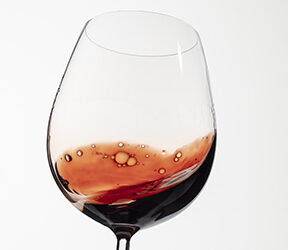
Q
I am a novice winemaker who recently purchased a new 15-gallon (57-L) American white oak barrel. While going through the purchasing process, I realized that there are an abundance of products to choose from. However, it appears that the vast majority of barrels on the market do not come with a storage stand or rack. I have spent many hours (to no avail) researching on the Internet how to build a cradle or stand for my new barrel. I have come accross some vague references, but no specific instructions. I am looking to build something at a height that is convenient for racking. Could you provide me some ideas on an easy and cost effective way to properly frame a stand for my barrels?
Roman Gorecki
via email
A
Congrats on embarking on the ever-fascinating and (just as often) maddening adventure of using oak in home winemaking! You’ve discovered what many of your predecessors already have — that it is sometimes difficult to locate appropriate equipment, additives and supplies, especially in the smaller quantities and sizes that so many of us home winemakers require.
Rather than waste any more time on the Internet (which we all need like another hole in the hogshead) looking for blueprints for barrel racks, I would just make like a Burgundian and get yourself some little triangular pieces of wood about 5” x 3” x 5”, and about 2 inches thick. I call these little isosceles wedges of scrap wood “chocks” (as I’m sure others out there do) and I use them all the time to keep barrels from rolling around in my cellar. You need four per barrel and all you do is position your barrel (bung hole up of course) on the floor where you want it in the cellar (or garage, or back porch, etc.) and then shove your handy wooden triangles under the barrel between the floor and the bilge, two at either end, and hopefully, with a little prodding and nudging, your barrel will lay contentedly on its side, completely stable and ready for filling.
If you want to keep your barrel off the floor and get even more fancy, get a pair of 2” x 4”s about, say, 2–3 feet long, put them down first, one on either end of the barrel (perpendicular to the staves) so that the barrel is balancing on them and not on the floor. Then stick your chocks under the barrel where it meets the 2” x 4” and you’ve got an even better, cheap off-the-floor stand! If this sounds a little hokey and homespun, take heart in the fact that many wineries the world over rely on this system and stack hundreds of barrels, pyramid style, using 2×4’s and chocks. They are quite stable, especially when the barrel is filled with wine, and make a neat, aesthetically pleasing display of barrels in a cellar, rather than those fussy metal racks that invariably lose their metal coating after five years. To raise the barrel to a height convenient for racking as you’ve mentioned, you could take it a step further and build a sturdy platform about a foot high that has a flat surface and use your 2” x 4”s and chocks in the way we’ve discussed.
Q
My dad and I made a gallon of coffee wine from a recipe we found on the Internet. It’s going through its second fermentation right now. It said to use coffee grounds, so we did. After we put it all together, I thought, “what happens to the caffeine?” Does it go away in the fermentation process? Does it stay there? If so, now I have something like a rum and Coke. Same effect? Not only that, first potential alcohol reading was 17%. I haven’t gotten a second yet. I hope it goes down a bit. Perhaps I should add some water? Can you help?
Dale Tucker
via email
A
Coffee wine, eh? I’ve heard of using strong black tea as a tannin additive and of using coffee in brewing recipes for a super-charged stout but I’ve never heard of making coffee wine. You and your father are quite adventurous — I hope that it turns out well.
To answer your question about whether caffeine hangs around in wine or gets fermented away somehow, I’m not an organic chemist but the small amount of research I did on the subject leads me to believe that the caffeine would tend to stay around in the wine . . . to a degree. I don’t think that yeast would metabolize the caffeine but you might lose some in the progressive rackings — it could precipitate out of solution under certain conditions but I would count on having some residual caffeine left in the wine. The level of caffeine, of course, will depend on how much coffee you used in the recipe — just as your average cup of joe will be stronger with the more ground coffee, so will your wine.
Your potential alcohol does sound high — is this a dessert wine recipe? If not, I do suggest adding some water — a potential alcohol of around 13.5–14% is safe for most commercial yeast strains. Happy fermenting with your java!
For more of the Wine Wizard’s wisdom, pick up the latest copy of WineMaker, available at better homebrew shops and bookstore locations.







